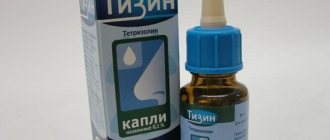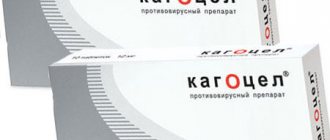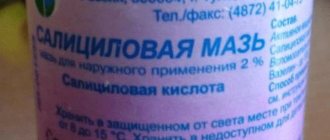Mode of application
urological infectious diseases: 100-200 mg of the drug per day;
various infectious diseases of the respiratory tract: 400 mg of the drug per day; infectious lesions of the skin: 400 mg of the drug per day; infectious lesions of soft tissues: 400 mg of the drug per day; infectious diseases of bone tissue: 400-800 mg of the drug per day; bacterial intestinal inflammation: 400-800 mg of the drug per day; infectious diseases in patients suffering from immunodeficiency conditions: 400-600 mg of the drug per day; infectious diseases of the genital tract: 200-400 mg of the drug per day; infectious diseases of the ENT organs: 400 mg of the drug per day; infectious damage to joint tissue: 400-800 mg of the drug per day; infectious diseases of the abdominal organs: 400 mg of the drug per day; various septic infections: 400 mg of the drug per day. Features of application:
- The average duration of treatment is 8 days;
- The maximum possible duration of use is no more than two months;
- During treatment, exposure to sunlight should be avoided;
- During treatment, it is necessary to refrain from any types of vigorous activity and driving;
- In pediatric patients it is used only in exceptional cases.
Side effects
- Central nervous system: the appearance of various phobias, headaches, dizziness, the appearance of nausea, convulsions, the appearance of hallucinations, the appearance of depression, increased intracranial pressure, causeless anxiety, excitement of the central nervous system, decreased tone, impaired coordination of movements, tremors in the limbs, confusion. , involuntary contractions of skeletal muscles, the appearance of unusual dreams, the appearance of psychotic reactions;
- Musculoskeletal system: inflammation of the ligaments, tendon rupture, inflammation of the synovial tendon sheaths;
- Digestive system: decreased or complete loss of appetite, stomach pain, increased activity of liver enzymes, flatulence, dysbacteriosis, vomiting, abdominal pain, diarrhea, jaundice due to stagnation of bile, the appearance of pseudomembranous enterocolitis;
- Hypersensitivity reactions to Zoflox: anaphylactic shock, Stevens-Johnson syndrome, urticaria, Quincke's edema, Lyell's syndrome, increased sensitivity to sunlight;
- Damage to the skin: the appearance of bullous dermatitis, the appearance of skin rashes, skin itching, the appearance of multimorphic erythema;
- Sense organs: disturbances in color perception, double vision, disturbances in taste perception, disturbances in auditory perception, disturbances in olfactory perception;
- Hematopoietic system: an increase in the number of eosinophils, a decrease in glucose concentration, the appearance of aplatstic anemia, the appearance of hemolytic anemia, a decrease in the number of leukocytes, an increase in the number of agranulocytes, anemia, a decrease in the number of platelets, a decrease in the number of all blood cells;
- Cardiovascular system: inflammation of the vascular wall, a sharp drop in the level of total blood pressure to critical values, acceleration of the heart rate, the appearance of pinpoint hemorrhages;
- Reproductive system: inflammation of the vagina;
- Laboratory test results: increased uric acid concentration, increased bilirubin concentration, increased creatinine concentration;
- Urinary system: deterioration of kidney function, the appearance of interscinal nephritis in the acute phase, the appearance of allergic inflammation of the kidneys;
- Respiratory system: the appearance of pneumonia of various origins, bronchial spasm;
- Various disorders: febrile conditions, the appearance of superinfection.
Zoflox – instructions for use, analogues, composition, indications
Pharmachologic effect:
Zoflox contains a fluoroquinolone derivative that inhibits the DNA hydrase enzyme. This effect stops supercoiling with subsequent destabilization of DNA. The drug has a bactericidal effect. Ofloxacin has activity against bacteria that produce beta-lactamases; mycobacterium atypical pneumonia. Staphylococcus aureus, Staphylococcus epidermalis, Neisseria, Escherichia coli, Citrobacteria, Klebsiella, Enterobacteriaceae, Proteus, Hafnia, Salmonella, Shigella, Yersinia, Campylobacter, Aeromonas, Plesiomonas, Vibrio cholerae, Parahaemophilus Vibrio, Haemophilus influenzae are sensitive to Zoflox. fevers, chlamydia, legionella , seratia, providencia, bordetella, moraxella, propionibacteria, brussels. Nocardia, anaerobes, and treponema are insensitive to ofloxacin-containing drugs.
Indications for use:
Zoflox is indicated for: – bronchitis; – orchitis; – urethritis; – salpingitis; – epidymitis; – gonorrhea; – pharyngitis; – oophoritis; – cystitis; – soft tissue infections; – endometritis; – infections in osteology; – pneumonia; – colpitis; – chlamydia; – pyelonephritis; – cervicitis; – sinusitis; – septicemia; – dermatological infections; – otitis media; – laryngitis; – parameterize; – meningitis; – joint infections; – prostatitis; – prevention of infections in immunodeficiency states.
Mode of application:
Zoflox tablets are taken orally, and the solution is used for intravenous drip infusion. The tablet form is taken with food or immediately before a meal. The dosage and course are determined by the treating specialist. Standard dosage is 0.2-0.8 g ofloxacin/day. The average therapeutic course is 8 days. The frequency of administration of tablet form and infusion solution is 1-2 times/day. When prescribing a dose of up to 0.4 g, it is recommended to drink it at a time in the morning. If the CC is 50-20 ml/min, the dosage is halved and divided into two doses; for severe renal failure, the initial dosage is 0.2 g/day, further daily dosage is 0.1 g/day/every other day. Patients on hemodialysis or dialysis are prescribed 0.1 g/day. For patients with liver failure, the maximum daily dosage is 0.4 g/day. After the disappearance of clinical symptoms, therapy is extended for another 3 days. For the treatment of salmonellosis, a weekly course of therapy is carried out; for infections in urology, the course lasts up to 5 days. The administration of the infusion solution should be carried out within 30-60 minutes. Standard dosages for various infections: Condition, indication Daily dosage Single dosage Urological infections 100-200 100-200 Genital tract infections 200-400 100-200 Respiratory tract infections 400 200 ENT infections 400 200 Infections of the skin, dermis, hypodermis, soft tissues 400 200 Joint infections 400-800 200-4 00Bone infections400-800200-400Infections of the abdominal cavity400200Bacterial enteritis400-800200- 400Septic infections400200Infections in patients with immunodeficiency conditions400-600200-300
Side effects:
The use of the drug Zoflox may be accompanied by: – gastralgia; – phobic conditions; – tendinitis; – anorexigenic effects; – skin rashes; – myalgia; – stimulation of the central nervous system; – impaired color perception; – tenosynovitis; – headaches; – gagging; – eosinophilia; – diplopia; – hypoglycemia; – hypotension; – aplastic anemia; – tendon rupture; – vasculitis; – vaginitis; – dizziness; – Stevens-Johnson syndrome; – pain in the abdominal area; – collapse; – increased concentration of uric acid; – impaired coordination of movements; – nausea; – Quincke's edema; – itchy skin; – tremor; – hemolytic anemia; – increased liver activity. transaminases; – convulsive reactions; – hyperbilirubinemia; – perversion of taste perception; – confusion; – urticaria; – deterioration of kidney function; – leukopenia; – numbness of the limbs; – diarrhea; – hallucinatory reactions; – paresthesias; – pneumonitis of an allergic nature; – hearing impairment; – Lyell's syndrome; – flatulence; – febrile conditions; – depressive states; – photosensitivity of the skin; – impaired sense of smell; – unusual dreams; – cholestatic jaundice; – erythema multiforme; – agranulocytosis; – dysbacteriosis; – bullous dermatitis; – intracranial hypertension; – anemia; – hypercreatininemia; – reactions of a psychotic nature; – pseudomembranous enterocolitis; – tachycardia; – anaphylaxis; – acute interstitial nephritis; – nephritis of an allergic nature; – thrombocytopenia; – anxious reactions; – bronchospasm; – superinfectious complications; – pancytopenia; - petichial hemorrhages.
Contraindications:
Zoflox is not prescribed for: – hypersensitive reactions to ofloxacin, fluoroquinolones, auxiliary components; – glucose-6-FDG deficiency; – epilepsy, cases of epilepsy in history; – presence of recent traumatic brain injury; – suffered a stroke; – existing inflammation in the central nervous system; – indications in pediatrics; – indications for pregnant women; – indications during the lactation period. Caution is exercised when prescribing ofloxacin-containing drugs to patients with: – atherosclerotic changes in cerebral vessels; – cerebral circulation disorders; – chronic renal failure; – the presence of organic lesions of the central nervous system.
Pregnancy:
Zoflox is contraindicated for pregnant women.
Interaction with other drugs:
Drug, group affiliation of drugs Results of possible interaction with ofloxacin Antacids with magnesium, aluminum or calcium Slowing down and reducing the absorption of ofloxacin. Reduced activity of the drug Zoflox Iron salts Reduced effectiveness of ofloxacin due to the formation of complexes of the active component with iron Theophylline Increased plasma concentration of theophylline Aminoglycosides Mutual potentiation of drugs Cimetidine Increased plasma concentration of ofloxacin, increased risk of toxic effects Furosemide Increased plasma concentration of ofloxacin Beta-lactam antibiotics Mutual potentiation Heparin-containing drugs Precipitation of the solution when mixing Daedalon Reduced absorption of the drug Zoflox, decreased effectiveness of the antibiotic Methotrexate Increased likelihood of toxicity effects of ofloxacin, worsening of the excretion of ofloxacin metabolites Calcium secretion blockers Increased plasma concentration of ofloxacin Osmotic laxatives Reduced absorption of ofloxacin-containing agents Metronidazole Mutual potentiation of effects Zinc-containing agents Negative effect on the absorption of ofloxacin, possible decrease in the effectiveness of the drug ZofloxGlibenclamide Increased plasma concentration glibenclamide Vitamin K antagonists Unpredictable effects on the blood system NSAIDs Neurotoxic effects Methylxanthine derivatives Increased likelihood of neurotoxic effects Nitroimidazole derivatives Risk of neurotoxicity Glucocorticosteroids Risk of tendinitis Carbonic anhydrase inhibitors Increased incidence crystalluria, increased likelihood of nephrotoxicity Citrates Risk of nephrotoxicity, loss of crystals in the kidneys Sodium bicarbonate Negative effect on the condition of the kidneys with an increased risk of crystalluric changes Probenecid Increased toxicity of ofloxacin due to decreased clearance of the drug Sucralfate Reduced effectiveness of the drug Zoflox due to impaired absorption of the active component
Overdose:
Exceeding therapeutic dosages is accompanied by symptoms of central nervous system depression and vomiting. Specialists carry out measures to clean the gastrointestinal tract. In addition, therapeutic assistance is prescribed according to the symptoms. Hemodialysis is almost ineffective.
Release form:
Zoflox is available in tablets and in the form of an infusion solution. The packaging is as follows: – 10 tablets. 0.2 g/pack; – 5 tables 0.4 g/pack; – 100 ml solution/bottle/package.
Storage conditions:
The storage temperature for bottles with infusion solution and tablets is up to 25 degrees Celsius. The shelf life of the solution is 2 years, tablets - 3 years. Children should not be allowed access to medicines.
Synonyms:
Zanocin, Ofloxacin-Teva, Cofloxin, Meneflox, Ofloxacin-Promed, Vero-Ofloxacin, Quiroll, Oflo, Ofloxacin Sandoz, Oflin, Ofloxacin-Darnitsa, Ofloxacin, Ofloxacin-KMP, Glaufos, Sinatsin, Ofloxacin 200, Loflox, Tarivid, Taritsin, Zanotsin OD, Oflox, Ofloxin, Ofloxacin Protech, Ofloxacin STADA, Ofloxacin-OBL, Tariferid, Geoflox, Oflobak, Oflogexal, Floxan.
Compound:
1 tablet of Zoflox 200 contains ofloxacin 0.2 g. Auxiliary components: hydroxypropylcellulose, sodium CMC, lactose, magnesium stearate, starch, Opadry Y-1-7000. 1 tablet of Zoflox 400 contains ofloxacin 0.4 g. Auxiliary components: hydroxypropylcellulose, sodium CMC, lactose, magnesium stearate, starch, Opadry Y-1-7000. 1 ml of infusion solution contains ofloxacin 2 mg. Auxiliary components: water, sodium chloride.
Nosological classification (ICD-10):
Meningococcal infection (A39) Streptococcal septicemia (A40) Other septicemia (A41) Gonococcal infection (A54) Other sexually transmitted chlamydial diseases (A56) Suppurative and unspecified otitis media (H66) Acute sinusitis (J01) Acute pharyngitis (J02) Acute laryngitis and tracheitis (J04) Bacterial pneumonia, not elsewhere classified (J15) Acute bronchitis (J20) Chronic sinusitis (J32) Chronic bronchitis, unspecified (J42) Impetigo (L01) Skin abscess, boil and carbuncle (L02) Cellulitis (L03) Pyoderma (L08.0) Pyogenic arthritis (M00) Osteomyelitis (M86) Acute tubulointerstitial nephritis (N10) Chronic tubulointerstitial nephritis (N11) Cystitis (N30) Urethritis and urethral syndrome (N34) Inflammatory diseases of the prostate (N41) Orchitis and epididymitis (N45) Salpingitis and oophoritis (N70) Inflammatory disease of the uterus, other than the cervix (N71) Inflammatory disease of the cervix (N72) Acute parametritis and pelvic cellulitis (N73.0) Acute vaginitis (N76.0) Subacute and chronic vaginitis (N76.1)
Additionally:
For pneumonia associated with pneumococci, as well as acute tonsillitis, the drug is not used. Courses lasting more than 2 months are not prescribed. Exposure to UV radiation should be avoided during therapy with ofloxacin-containing agents. Discontinuation of the drug is carried out when symptoms of pseudomembranous colitis, complications from the nervous system, symptoms of hypersensitivity, tendonitis appear. Tendinitis requires immediate immobilization of the tendon. Ofloxacin should not be used in parallel with ethanol-containing drugs. The possible effect on the state of the nervous system makes driving undesirable during treatment with ofloxacin-containing agents. It is undesirable to use tampons during a therapeutic course of Zoflox due to an increased risk of developing vaginal candidiasis. There is an increased risk of deterioration in the condition of patients with myasthenia and porphyria when consuming ofloxacin. The drug affects diagnostic tests related to the detection of Mycobacterium tuberculosis. Possible toxic effects on the liver and kidneys when used in patients with renal and liver failure. Reducing the likelihood of toxic effects is achieved by adjusting the doses of ofloxacin. Use in pediatrics is possible for health reasons. Daily dosage for children is 0.0075 g/kg. The maximum daily pediatric dosage is 0.015 g/kg.
general information
- Manufacturer:
Piluli
Pharmacokinetic properties
In accordance with the instructions for use for Zoflox, after oral administration of the medication, complete and rapid absorption of the main substance is observed. Plasma protein binding is 24%, bioavailability is 97%, and it takes 1 to 2 hours to reach maximum concentration. The maximum concentration directly depends on the dosage of the drug.
Food does not affect the bioavailability of the drug, but may slow down its absorption. After a single intravenous infusion, after 60 minutes (with a dosage of ofloxacin 200 mg), the maximum concentration in the blood is 2.8 mcg/ml, and after 12 hours – 0.3 mcg/ml. Equilibrium concentration is reached after four doses. The distribution of the active substance occurs in the respiratory system, soft tissues, skin, bones, bile, pelvic organs, urine, prostate secretions, and saliva. The medicine penetrates well through the placental barrier and can be excreted in breast milk. It is also capable of penetrating into the cerebrospinal fluid.
Metabolism of the substance occurs in the liver with the formation of N-oxide of ofloxacin and dimethylofloxacin. The half-life does not depend on the dosage and ranges from 5 to 8 hours. It is excreted, as a rule, by the kidneys unchanged (up to 90%), as well as with bile (about 5%).
What else does the instructions for Zoflox tell us?
Release forms and composition
The medicine is produced in various forms: tablets, ointments, capsules, drops and solution. The active substance in all forms is ofloxacin, a second generation quinolone.
Pills
They are protected by a shell and contain the active ingredient in dosages of 400 mg and 200 mg. Additional Ingredients:
- milk sugar;
- corn starch;
- talc;
- hypromellose 2910/5.
Tablets are packaged in 10 pcs. in blisters.
Drops
They produce 2 types of drops: eye and ear. The drug is presented in the form of a clear solution, 1 ml of which contains:
- 3 mg ofloxacin;
- saline;
- benzalkonium chloride;
- hydrogen chloride;
- prepared water.
The medicine in liquid form is bottled in plastic bottles. The containers are equipped with a dropper.
They produce 2 types of drops: eye and ear.
Solution
The solution is intended for infusion. It has a transparent yellowish-green color. The drug is bottled in quantities of 100 ml. In addition to the active substance, there are additional components:
- saline;
- trilon B;
- hydrogen chloride;
- purified water.
Capsules
This form of the drug is presented in the form of yellow gelatin capsules. Compound:
- ofloxacin - 200 mg;
- hypromellose;
- sodium lauryl sulfate;
- milk sugar;
- calcium phosphate disubstituted anhydrous;
- talc.
The drug is also presented in the form of yellow gelatin capsules.
Ointment
The drug is produced in the form of ointments of 2 types: for the treatment of wounds and for the treatment of eye diseases. Ofloxacin, intended for application to the skin, is sold in tubes of 15 or 30 g. 1 g of the medication contains the following substances:
- 1 mg ofloxacin;
- 30 mg lidocaine hydrochloride;
- propylene glycol;
- poloxamer;
- macrogol 400, 1500, 6000.
Eye ointment is available in tubes of 3 and 5 g. Composition:
- ofloxacin - 0.3 g;
- nipagin;
- nipazole;
- petrolatum.
Description and instructions for the drug Zoflox
Zoflox is an antibiotic from the fluoroquinolone group. This medicine contains ofloxacin. An analogue of Zoflox can be called the drug Tarivid. Treatment with this antimicrobial agent is indicated for a wide range of infections. Many gram-negative bacteria, for example, Yersinia, Shigella, Escherichia, Proteus and many others, exhibit exceptional sensitivity to its action. Also, Zoflox can restore health when infected with mycoplasma and chlamydia. Of the gram-positive microorganisms, staphylococci and streptococci are sensitive to this antibiotic. And only aerobes, with rare exceptions, are resistant to Zoflox. All this makes this medicine a largely universal remedy for a wide variety of infectious lesions.
Zoflox is used for: Infections caused by microorganisms sensitive to the action of ofloxacin, affecting a variety of tissues and organs;
The release form of Zoflox is a solution that is administered through a dropper (intravenously), or tablets. Dosages are calculated individually. Usually, a regimen is prescribed for several doses per day. The instructions for the drug Zoflox specify that when the symptoms of infection disappear, treatment with this antibiotic should be continued for a couple more days. If a medicine is prescribed in tablet form, the doctor must clarify whether to take it before or during meals. Concomitant food intake may somewhat slow down the absorption of Zoflox, but also provides greater protection for the gastrointestinal mucosa.
Zoflox is contraindicated for:
- Reduced seizure threshold (for example, after brain injury or stroke) and epilepsy;
- Pregnancy and lactation;
- Treatment of patients under 18 years of age;
- Intolerance to drugs of this group;
- with caution when -
- Cerebral circulation disorders;
- Atherosclerosis;
- Organic disorders of the nervous system;
- Kidney failure;
Side effects of Zoflox
The digestive and nervous systems are most susceptible to the effects of this drug. From the gastrointestinal tract and liver, various types of indigestion, nausea, liver dysfunction (even necrosis), hepatitis, bleeding, and so on may occur. From the nervous system, fatigue, sleep disturbances, and irritability are sometimes observed. But more severe reactions can also occur, including suicidal thoughts, neuropathy, hallucinations, and so on.
In general, the systematic action of Zoflox can negatively affect the condition of any organs. Simply, reactions from other systems were recorded much less frequently than the symptoms mentioned.
Contraindications
Before starting to use Ofloxacin, it is recommended to visit a doctor to determine whether there are indications for its use. Only an experienced urological specialist should deal with this issue. Diagnosing prostatitis is a complex process that requires certain skills from the doctor.
The first step is to collect an anamnesis of life and disease, then an objective examination and the use of additional instrumental and laboratory methods. These include ultrasound diagnostics and analysis of prostate secretions to identify the pathogen. Typically, Ofloxacin is prescribed when the following diagnoses are established:
- ENT infections;
- osteomyelitis;
- bacterial infectious processes in the respiratory system;
- peritonitis;
- pyelonephritis;
- prostatitis acute and chronic;
- gonorrhea;
- tuberculosis of various localizations;
- pelvic organ infections.
We suggest you read: Biseptol side effects
"Ofloxacin" is classified as a drug that is highly toxic if used incorrectly. Uncontrolled use without the supervision of a physician is strictly contraindicated. It is also not recommended to prescribe the drug for the following conditions:
- allergy to medication components;
- pregnancy;
- lactation period;
- age up to fifteen years;
- pathologies associated with impaired renal filtration rate;
- liver failure.
Possible side effects
This medication is usually well tolerated as long as your doctor's recommendations regarding frequency and dosage are followed. In rare cases, the following side effects may occur, identified during clinical trials:
- allergic reactions;
- itching of the skin;
- the occurrence of urticaria rash;
- local swelling;
- loss of appetite;
- intestinal colic;
- development of nausea/vomiting;
- apathy;
- decrease in the number of leukocytes;
- thrombocytopenia;
- distortion of the perception of taste and smell;
- photosensitization of the skin.
If the above phenomena develop, you need to stop taking the medication and replace it with an analogue in order to prevent the development of more serious complications.
The drug should be prescribed exclusively by a doctor after the patient has undergone tests. This is due to the fact that Ofloxacin has a number of contraindications for use. Among them are:
- individual intolerance to the components of the product;
- neurological disorders (epilepsy);
- pathologies of the central nervous system;
- circulatory disorders in the brain;
- TBI.
Patients suffering from renal and liver failure need to closely monitor their own condition. During therapy, you need to constantly take tests showing the biochemical composition of the blood and the functioning of the liver and kidneys.
Like any antibiotic, Ofloxacin has its contraindications and side effects.
The drug is one of the safest antibiotics. But patients with various chronic pathologies and disorders of certain systems must be constantly monitored by a urologist during the period of therapy.
Zoflox side effects
Overdose
Symptoms: dizziness, confusion, lethargy, disorientation, drowsiness, vomiting. Treatment: gastric lavage, symptomatic therapy. Hemodialysis removes 10-30% of the drug.
Interaction with other drugs
Food products, antacids containing A13+, Ca2+, Md2+ or iron salts reduce the absorption of ofloxacin, forming insoluble complexes (the time interval between the administration of these drugs should be at least 2 hours). Reduces the clearance of theophylline by 25% (with simultaneous use, the dose of theophylline should be reduced). Cimetidine, furosemide, methotrexate and drugs that block tubular secretion increase the plasma concentration of ofloxacin. Increases the concentration of glibenkpamide in plasma. When taken simultaneously with vitamin K antagonists, it is necessary to monitor the blood coagulation system. When prescribed with non-steroidal anti-inflammatory drugs, nitroimidazole derivatives and methylxanthines, the risk of developing neurotoxic effects increases. When administered concomitantly with glucocorticosteroids, the risk of tendon rupture increases, especially in the elderly. When prescribed with drugs that alkalinize urine (carbonic anhydrase inhibitors, citrates, sodium bicarbonate), the risk of cristapluria and nephrotoxic effects increases.
special instructions
It is not the drug of choice for pneumonia caused by pneumococci. Not indicated for the treatment of acute tonsillitis. It is not recommended to use for more than 2 months, to be exposed to sunlight, ultraviolet rays (mercury-quartz lamps, solarium). In case of side effects from the central nervous system, allergic reactions, pseudomembranous colitis, discontinuation of the drug is necessary. For pseudomembranous colitis confirmed by colonoscopy and/or histology, oral administration of vancomycin and metronidazole is indicated. Rarely, tendinitis can lead to tendon rupture (mostly the Achilles tendon), especially in older patients. If signs of tendinitis occur, you must immediately stop treatment, immobilize the Achilles tendon and consult an orthopedist. During the treatment period, it is necessary to refrain from driving vehicles and engaging in potentially hazardous activities that require increased concentration and speed of psychomotor reactions, and you should not consume ethanol. When using the drug, women are not recommended to use tampons, due to the increased risk of developing thrush. During treatment, the course of myasthenia gravis may worsen and attacks of porphyria may increase in predisposed patients. May lead to false negative results in the bacteriological diagnosis of tuberculosis (prevents the isolation of Mycobacterium tuberculosis). In patients with impaired liver or kidney function, monitoring of plasma concentrations of ofloxacin is necessary. In case of severe renal and hepatic insufficiency, the risk of developing toxic effects increases (dose adjustment is required). In children, it is used only when there is a threat to life, taking into account the expected benefits and the potential risk of side effects, when it is impossible to use other, less toxic drugs. The average daily dose in this case is 7.5 mg/kg, maximum 15 mg/kg.
Release form
Film-coated tablets, 200 and 400 mg. 1 blister contains 10 tablets of 200 mg. 1 blister contains 5 tablets of 400 mg. 1 blister in a cardboard box with instructions for use.
Photo of a blister of Zoflox tablets 10 pieces (front view)
Photo of a blister of Zoflox tablets 10 pieces (back view)
Storage conditions
At a temperature not higher than 25°C. Keep out of the reach of children.
Best before date
2 years. Do not use after expiration date.
Photo of Zoflox 200 mg tablets showing the price, date of manufacture and expiration date of these tablets
Photo of Zoflox 400 mg tablets showing the price, date of manufacture and expiration date of these tablets
Conditions for dispensing from pharmacies
On prescription.
Photo of Zoflox 200 mg tablets showing the price
Photo of Zoflox 400 mg tablets showing the price
Photo of Zoflox tablets showing the manufacturer
Interaction with other drugs
| Drug, group affiliation of drugs | Possible interaction results with ofloxacin |
| Antacids with magnesium, aluminum or calcium | Slowing down and reducing the absorption of ofloxacin. Reduced activity of the drug Zoflox |
| Iron salts | Reduced effectiveness of ofloxacin due to the formation of complexes of the active component with iron |
| Theophylline | Increased plasma concentrations of theophylline |
| Aminoglycosides | Mutual potentiation of drugs |
| Cimetidine | Increased plasma concentrations of ofloxacin, increased risk of toxic effects |
| Furosemide | Increased plasma concentrations of ofloxacin |
| Beta-lactam antibiotics | Mutual potentiation |
| Heparin-containing drugs | Solution precipitation during mixing |
| Daedalon | Reduced absorption of the drug Zoflox, decreased effectiveness of the antibiotic |
| Methotrexate | Increased likelihood of toxic effects of ofloxacin, worsening of the excretion of ofloxacin metabolites |
| Calcium secretion blockers | Increased plasma concentrations of ofloxacin |
| Osmotic laxatives | Reduced absorption of ofloxacin-containing products |
| Metronidazole | Mutual potentiation of effects |
| Zinc-containing products | Negative effect on the absorption of ofloxacin, possibly reducing the effectiveness of the drug Zoflox |
| Glibenclamide | Increased plasma concentrations of glibenclamide |
| Vitamin K antagonists | Unpredictable effects on the blood system |
| NSAIDs | Neurotoxic effects |
| Methylxanthine derivatives | Increased likelihood of neurotoxic effects |
| Nitroimidazole derivatives | Risk of neurotoxicity |
| Glucocorticosteroids | Risk of developing tendinitis |
| Carbonic anhydrase inhibitors | Increased incidence of crystalluria, increased likelihood of nephrotoxicity |
| Citrates | Risk of nephrotoxicity, kidney crystal loss |
| Sodium bicarbonate | Negative effects on kidney health with increased risk of crystalluric changes |
| Probenecid | Increased toxicity of ofloxacin due to decreased drug clearance |
| Sucralfate | Reduced effectiveness of the drug Zoflox due to impaired absorption of the active component |
Intetrix (Intetrix) description and instructions for use of the drug.
Instructions for use
Ofloxacin tablets
Taken orally. The dose is selected individually depending on the location, severity of the infection, sensitivity of microorganisms, as well as the general condition of the patient and liver and kidney function. Adults - 200-800 mg per day, course of treatment - 7-10 days, frequency of use - 2 times a day. A dose of up to 400 mg per day can be given in one dose, preferably in the morning.
For gonorrhea - 400 mg once. In patients with impaired renal function (with creatinine clearance 50-20 ml/min) 100-200 mg per day. If creatinine clearance is less than 20 ml/min - 100 mg every 24 hours; for hemodialysis and peritoneal dialysis - 100 mg every 24 hours. The maximum daily dose for liver failure is 400 mg per day.
The tablets are taken whole with water, before or during meals. The duration of treatment is determined by the sensitivity of the pathogen and the clinical picture; treatment should be continued for at least another 3 days after the symptoms of the disease disappear and body temperature completely normalizes.
When treating uncomplicated and complicated lower urinary tract infections, the course of treatment is 7 and 10 days, respectively, for prostatitis - up to 6 weeks, for infections of the pelvic organs - 10-14 days, for infections of the respiratory and skin organs - 10 days.
Solution for infusion
The drug is administered intravenously. Ofloxacin therapy begins with intravenous drip administration of 0.2 g over 30-60 minutes. If the patient’s condition improves, the patient is transferred to taking the drug orally (tablets) while maintaining the dosage. Recommended doses of Ofloxacin depending on the disease and location of the infection:
- Urinary tract – 0.1 g 1-2 times a day.
- Kidneys and genitals – 0.1-0.2 g, divided into 2 injections per day.
- Respiratory tract, ENT organs, skin and soft tissues, bones and joints, abdominal cavity, as well as septic infections - 0.2 g, divided into 2 injections per day; It is allowed to increase the daily dose, if necessary, to 0.4 g while maintaining the frequency of administration.
- Prevention of infection in patients with a pronounced decrease in immunity - 0.4-0.6 g per day.
Ointment
Locally. Place 1 cm strips of ointment (0.12 mg ofloxacin) behind the lower eyelid of the affected eye 2-3 times a day. For chlamydial infections, ointment is applied 5-6 times a day.
To administer the ointment, carefully pull the lower eyelid down and, lightly pressing the tube, insert a 1 cm long strip of ointment into the conjunctival sac. Then close the eyelid and move the eyeball to distribute the ointment evenly
The duration of the course of treatment is no more than 2 weeks (for chlamydial infections, the course is extended to 4-5 weeks).
Compound
1 tablet of Zoflox 200 contains ofloxacin 0.2 g. Auxiliary components: hydroxypropylcellulose, sodium CMC, lactose, magnesium stearate, starch, Opadry Y-1-7000. 1 tablet of Zoflox 400 contains ofloxacin 0.4 g. Auxiliary components: hydroxypropylcellulose, sodium CMC, lactose, magnesium stearate, starch, Opadry Y-1-7000. 1 ml of infusion solution contains ofloxacin 2 mg. Auxiliary components: water, sodium chloride.
Dianormet 500. Dianormet 500. - instructions, composition, dosage, side effects of use
pharmachologic effect
Drug group: High activity:
- Mycobacteria that cause atypical pneumonia;
- Cutaneous staphylococcus;
- Escherichia coli;
- Klebsiella of various types;
- Bacteria of the genus Proteus;
- Salmonella of various types;
- Yersinia of various types;
- Aeromonas of various types;
- Pathogens of cholera;
- Pathogens of chlamydia;
- Seratias of various types;
- Bordetella of various types;
- Propionic bacteria of various species;
- Staphylococcus aureus;
- Neisseria of various species;
- Cytobacteria of various species;
- Enterobacteriaceae of various species;
- Hafnia of various types;
- Shigella of various types;
- Campylobacter of various species;
- Plesiomonas of various species;
- Parahaemophilus vibrio;
- Causative agents of hemophilic fever;
- Legionellosis pathogens;
- Bacteria of the genus Providentia;
- Moraxella of various types;
- Pathogens of brucellosis.
Lack of sensitivity:
- Nocardia of various types;
- Treponema of various types;
- Anaerobic bacteria.
Therapeutic effects:
- Suppression of the activity of enzymes that synthesize DNA in a microbial cell;
- Bactericidal effect.
pharmachologic effect
The active substance has a detrimental effect on DNA gyrase. Able to be active against microbes that produce beta-lactamases and atypical bacteria that grow quickly.
The absorption of the drug occurs quickly. 25% binds to blood plasma proteins. It has high bioavailability, reaching 96%. When taking the tablet orally, the highest concentration is observed within 2 hours. Absorption may be slower due to food intake, but bioavailability will not be significantly affected.
Distributed throughout the body, including the respiratory system, soft tissues, skin, prostate secretions, saliva, urine, bile, pelvis and abdominal cavity. The maximum half-life is up to 7 hours, and this does not depend on the initial dosage of the drug.
Excretion occurs through the kidneys, and to a much lesser extent with bile. After a single dose of 200 mg, the active substance is detected in the patient’s urine after 20-24 hours. Hemodialysis can eliminate 10% to 30%.
Zoflox is active against microbes that produce beta-lactamases and atypical bacteria that grow rapidly.
Directions for use and dosage of Zoflox
The tablets are taken orally. Only a doctor can indicate the correct dosage that is suitable for a particular disease. It depends on the degree of development of the pathology, the sensitivity of microorganisms, the age of the patient and the characteristics of the body.
The daily dose for adults ranges from 200 mg to 800 mg. The duration of therapy is most often 7-10 days. The entire dose should be divided into 2 doses.
If a dose of 400 mg is prescribed, it can be taken at a time, but then it must be done in the morning. For gonorrhea, take 400 mg per day. For infections of the genitourinary system, for example, it is enough to take 100 mg 1-2 times a day.
Zoflox tablets are taken orally; the daily dose for adults ranges from 200 mg to 800 mg.
It is recommended to take tablets before or after meals. Treatment with them should be continued for 3 days after the patient’s body temperature has returned to normal and signs of pathogen activity have disappeared.
When using a solution for infusion, the dosages remain the same, but in this way the patient will be treated when the course of the disease is complicated.
Cephalosporins
Cephalosporins belong to the group of beta-lactam antibiotics. They also produce a bactericidal effect.
In practical urology, drugs of 2 and 3 generations are mainly used, which are the most effective against typical pathogens of acute prostatitis. In chronic cases of the disease, these drugs are rarely used. Today the following drugs are prescribed for therapy:
- cefuroxime (“Zotsef”, “Zinnat”, “Cefuroxime Sandoz”);
- cefixime (“Ceforal”, “Suprax”, “Pancef”);
- ceftriaxone (“Lendacin”, “Norakson”, “Cefogram”, “Efectal”, “Protsef”).
Side effects include possible allergic reactions (cross-hypersensitivity to penicillins), dyspeptic disorders, pseudomembranous colitis and Stevens-Johnson syndrome.
Ceftriaxone preparations are administered intravenously 2 or 3 times a day, 1.0 g of the active substance, after dissolving the bottle in 3-4 ml of solution for injection. Cefaxime is prescribed orally at a dose of 0.4 g once a day.








